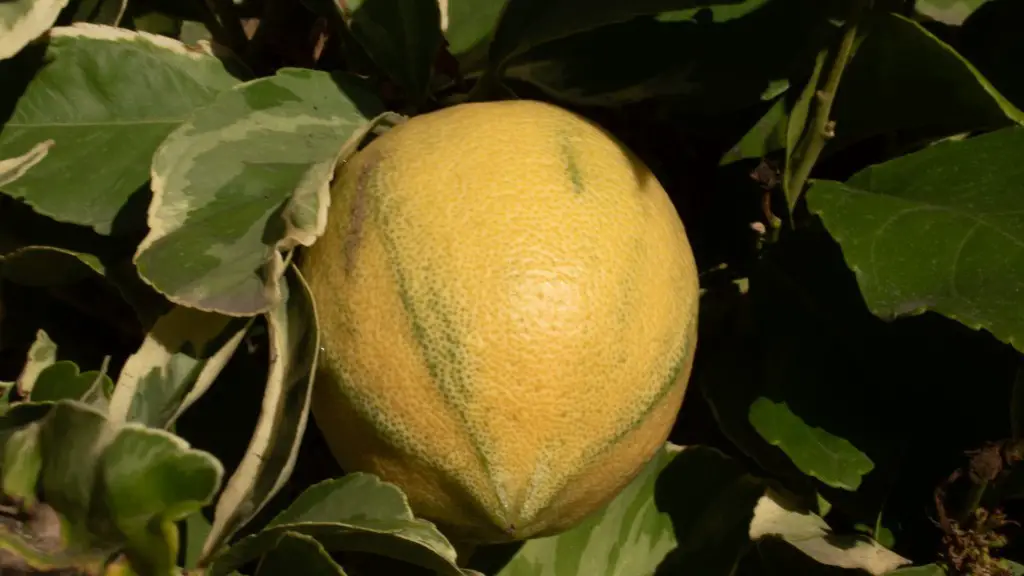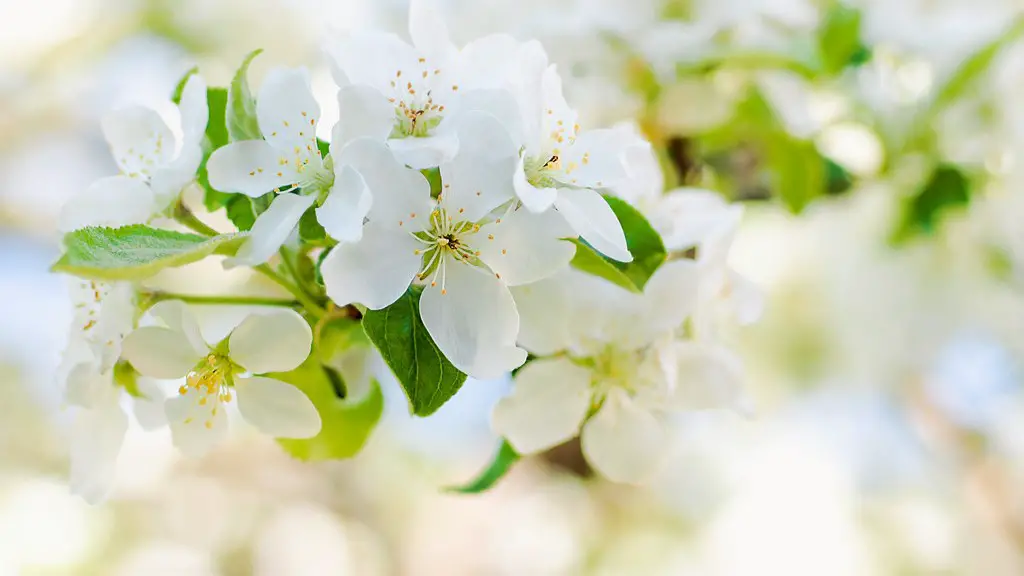The lemon tree is an evergreen, perennial fruit tree that can beautify a garden and produce bountiful harvests for many years. Knowing how and when to trim a lemon tree is an important part of keeping it healthy and producing delicious fruit. It’s best to use sharp pruning shears, because dull tools can tear the bark, leaving the tree vulnerable to disease. Always remove dead or diseased branches first, as they can spread the infection.
It’s best to trim the lemon tree when it’s in the dormant season, late summer through early winter. This is when the tree isn’t actively growing and before its natural flowering period. Pruning in spring can disrupt the tree’s growth and reduce future harvest yields. Prune the branches and trunk to maintain the desired shape and size, but leave plenty of healthy interior branches with plenty of leaf growth as they will provide food to the fruit. When trimming the outer branches, cut just above a bud or branch to encourage it to grow. Don’t cut too close to the trunk to avoid leaving a gap, or too far from the trunk as it will reduce available sunlight and nutrition. If pruning to reduce the size of the tree, cut the small branches first before the larger branches.
When trimming to maintain the shape of the tree, stay away from the center and keep the canopy even and open. In order to shape the bark growth, angle the cuts on the branches slightly downward away from the center of the tree. To keep the tree sprouting new branches and reduce pest issues, trim away water sprouts and any spindly growth that takes away from the uniform shape of the tree. This also helps to keep the canopy open to air circulation, which will help prevent disease.
At the end of trimming each year, inspect the entire tree for any pest damage or disease. Remove any affected branches to keep the infection from spreading. Clean the pruning shears with soapy water before each use to prevent the spread of diseases, and dip them in rubbing alcohol after use. After pruning, give the tree a deep watering to encourage new growth, and mulch around the base to help retain moisture and discourage weeds that can compete with the root system.
How to Prune Vigorously Growing Branches
In most cases, pruning is done to keep the shape of the tree and reduce overcrowding, as well as to remove dead, diseased, or damaged branches. But if a tree is actively growing, it may be necessary to prune back some of the vigorously growing branches. When this happens, it’s important to trim the branches back, leaving a few inches of healthy growth and cutting just above a leaf node. This will encourage the tree to grow in a more even, Fuller fashion.
In some cases, it may be necessary to trim back a branch to the main trunk. This can be done when the tree is actively growing, but it should be done carefully and sparingly. When pruning back all the way to the trunk, trim just below a point of growth and slightly above a bud. This will help to keep the regrowth from becoming too dense and the tree from becoming unstable.
When pruning vigorous branches, it’s important to keep in mind that too much pruning can reduce potential fruit yields. Keep the canopy open and even, but also leave enough leaf growth so that the fruit has enough nutrition to develop. Prune off any diseased or dead branches regardless of the time of year, and inspect the tree for any pest damage annually.
How to Remove Multiple Branches At Once
It may be necessary to remove more than one branch at a time to reduce overcrowding or to shape the tree. Before doing so, it’s important to take the time to plan the cuts, as this will reduce damage to the tree and encourage healthy new growth. Begin by making a careful inspection of the branches, looking for weak union points or any signs of infection. Branch unions are where two branches join, and if these are weak, the branches may need to be removed.
When pruning multiple branches at once, it’s important to do it slowly and carefully. Begin by removing the smaller of two overlapping branches, then the larger one. If there is more than one pair of overlapping branches, move around the tree, making careful cuts and leaving an even canopy. This will help to keep the tree balanced and symmetrical.
When removing multiple branches, try to keep at least one healthy growing point on each branch. This will encourage new growth and allow the tree to continue to produce fruit. Inspect the cuts to ensure they are clean and even, then seal the wounds with a wax based wound sealer to protect against infection. Pruning in this way, with the right tools and techniques, will help to keep the tree healthy and productive.
How To Prune For Maximum Fruit Production
When pruning for maximum fruit production, look for branches that aren’t producing fruit and remove them. Make sure to leave plenty of healthy interior branches in order for the tree to achieve maximum light exposure. Also leave enough branching within the tree so that the air can circulate to reduce pest issues. Prune away any weak or diseased branches and water sprouts that take away from producing quality fruit.
When pruning for fruit production, aim to maintain a reasonably small canopy compared to the tree’s overall height. This will encourage the branches to be filled with lots of fruits, rather than spanning large areas with few fruits. Always start by removing dead or diseased branches first, and inspect the branches for any sign of insect damage before cutting. When making the cuts, angle them slightly downward away from the center of the tree.
Prune away water sprouts and other young shoots that take away from the overall shape, and inspect the tree after pruning for any signs of disease. Seal the pruned cuts with a wax-based wound sealant, then deeply water the tree to help encourage new growth. Pruning a lemon tree in this way can help to maximize fruit production and keep it healthy for many harvests.
Tools Needed for Pruning a Lemon Tree
When pruning a lemon tree, it’s important to use the right tools to ensure the cuts are clean and the tree won’t become vulnerable to infection. The most important tool is a pair of sharp, clean pruning shears. These should be checked before and after use to make sure they’re free of rust or dirt which can carry disease. It’s also important to use them in the correct way, applying pressure to both sides until the branch snips, rather than squeezing and forcing them closed.
It’s also important to have a ladder if higher parts of the tree are to be pruned. Make sure the ladder is in good condition and positioned safely before climbing. Wear protective eyewear and gloves, as well as long pants andclosed-toe shoes, to protect from branch and leaf debris. For larger branches, it may be necessary to use a hand saw, but make sure to always start the cut from the downward side of the branch.
When pruning a tree, it’s important to make sure the tools are clean, sharp, and in good working order. Properly maintain the tools between use and always use clean, sharp blades to get the most precise cut. This can make all the difference between a healthy tree and one with damaged branches and poor fruit production.
How To Clean Pruning Tools Between Use
When it comes to pruning, it’s important to be consistent in cleaning the tools between use to reduce the spread of disease. Begin by wiping them off with a clean cloth, then give them a bath in soapy water. Use a brush to carefully dislodge any dirt or debris, then rinse and leave to air-dry fully. Once they’re dry, dip the blades in rubbing alcohol to help sterilize them, then dry off with a clean cloth.
It’s important to remember to clean the tools between each use to avoid spreading infection from branch to branch. When finished with pruning the tree, make sure to give the blades a final cleaning to complete the process. Properly cleaned tools will help keep the tree healthy and productive for many years.
In addition to cleaning tools between use, it’s also important to sharpen them regularly. Pruning shears and saws can become dull with repeated use, leading to unclean cuts and potential infection. Investing in a top-quality tool sharpener can help keep the shears in good working order, while also providing a more efficient and precise cut.
Regularly maintaining the pruning tools, and cleaning between use, is vital for pruning a healthy lemon tree. Clean tools, used correctly and properly sharpened, can make all the difference when it comes to achieving an attractive tree with plenty of bountiful fruit.





